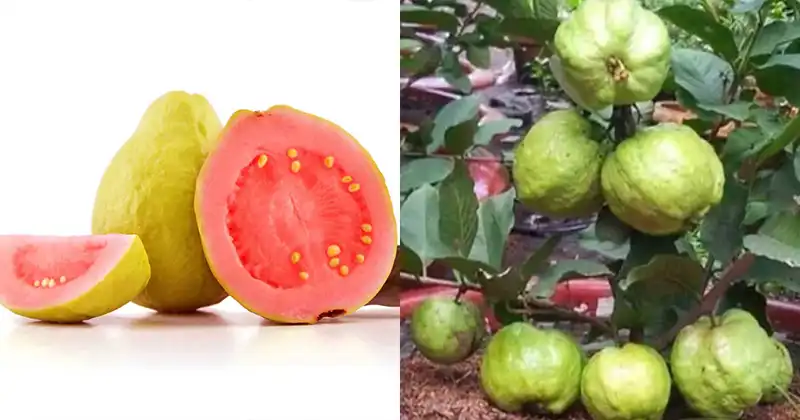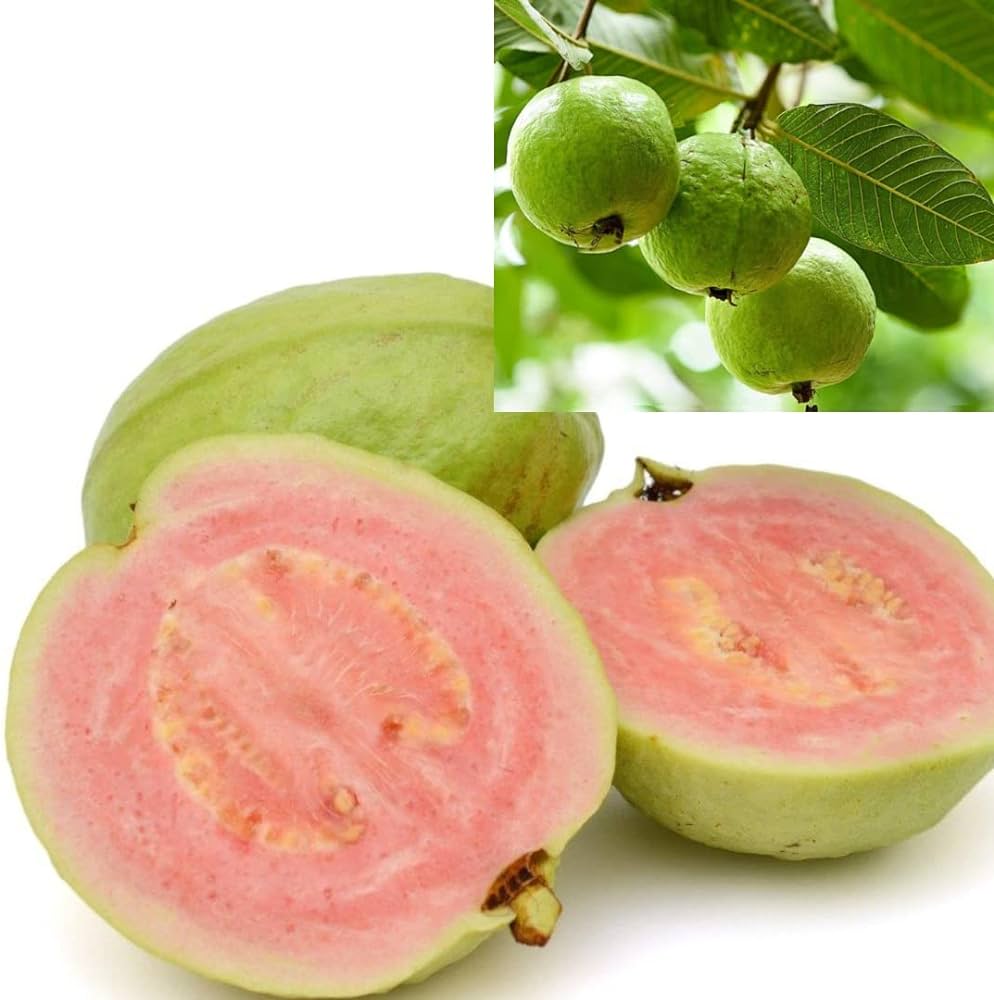
Guava (Psidium guajava) is a delightful tropical fruit that bursts with sweet, aromatic flavor. While it typically thrives in tropical and subtropical regions, you can successfully grow guava at home in pots, allowing you to enjoy your own homegrown harvest no matter where you live. In this easy-to-follow guide, we will take you through the entire process of growing guava in pots, from seed harvesting to nurturing your potted guava tree for an abundant harvest.
Harvesting Guava Seeds
To start your journey to homegrown guavas, you’ll need guava seeds. Here’s how to harvest seeds from a ripe guava fruit:
Materials You’ll Need:
- Ripe guava fruit
- Knife
- Spoon
Step 1: Choose a Ripe Guava
Select a mature, ripe guava that yields slightly to gentle pressure. This indicates it is ready for seed extraction.
Step 2: Cut Open the Guava
Use a clean, sharp knife to slice the guava in half. Be careful not to damage the seeds.
Step 3: Remove Seeds
Gently scoop out the seeds from the center of the guava using a spoon. Occasionally, you may find seeds embedded in the flesh, so make sure to collect them all.
Step 4: Clean the Seeds
Rinse the collected seeds under running water to remove any remaining fruit flesh. Pat them dry with a clean paper towel.

Germinating Guava Seeds
Now that you have guava seeds, it’s time to prepare them for planting. Proper germination is crucial for healthy guava plants.
Materials You’ll Need:
- Guava seeds
- Moist paper towel
- Plastic ziplock bag
Step 1: Prepare the Paper Towel
Lay the guava seeds on a moist paper towel. The towel should be damp but not overly wet, and be sure to space the seeds apart.
Step 2: Fold the Paper Towel
Fold the paper towel over the seeds, creating a seed packet.
Step 3: Seal in a Ziplock Bag
Place the folded paper towel with seeds inside a plastic ziplock bag and seal it. This creates a controlled environment for germination.
Step 4: Store in a Warm Place
Position the sealed ziplock bag in a warm, well-lit area such as a windowsill or near a heat source. Guava seeds typically germinate best in temperatures between 75°F to 85°F (24°C to 29°C).
Step 5: Monitor and Wait
Check the seeds regularly to maintain the paper towel’s moisture. Germination can take between 2 to 8 weeks, so patience is essential.

Planting Your Guava Seedlings in Pots
Once your guava seeds have sprouted and developed a small root, they are ready to be transplanted into pots.
Materials You’ll Need:
- Guava seedlings
- Potting mix
- Pots with drainage holes
- Watering can
- Balanced, slow-release fertilizer
Step 1: Prepare the Pots
Choose pots that are at least 10-12 inches in diameter and have good drainage holes to prevent waterlogging. Fill them with a well-draining potting mix suitable for fruit trees.
Step 2: Transplant Seedlings
Create a small hole in the center of the potting mix and gently place the germinated guava seedling with the root pointing downward into the hole. Carefully cover the seedling with soil.
Step 3: Watering
Thoroughly water the newly transplanted seedlings and maintain consistent moisture. Guavas appreciate a slightly humid environment, so avoid overwatering.
Step 4: Fertilization
Once your guava seedlings are established, start applying a balanced, slow-release fertilizer to provide the essential nutrients they need.

Caring for Your Guava Potted Tree
To ensure the success of your potted guava tree, proper care and attention are necessary. Here are some essential tips:
- Sunlight: Guava trees thrive in full sun, so position your pots in a spot that receives at least 6-8 hours of direct sunlight per day.
- Watering: Consistently water your guava tree to maintain even moisture. Ensure the soil remains consistently moist but not waterlogged.
- Pruning: Regularly prune your guava tree to maintain its shape, remove dead or diseased branches, and encourage new growth.
- Pests and Diseases: Keep an eye out for common guava pests like fruit flies and aphids. If needed, apply appropriate treatments.
- Frost Protection: If you live in a cooler climate, provide frost protection for your guava during winter months. Move the pots indoors or use frost cloth to shield the tree from freezing temperatures.
- Fruit Thinning: Thin out excess fruit when they are still small to ensure that the remaining fruits grow larger and healthier.
- Harvesting: Guavas are typically ready to harvest when they give slightly to gentle pressure. Simply twist the fruit gently to detach it from the tree.

Growing guava at home in pots is a fulfilling endeavor that can yield delicious fruits no matter where you live. With the right care, your potted guava tree will flourish and provide you with a bountiful harvest for years to come. Enjoy the sweet, tropical flavors of your own homegrown guavas!





